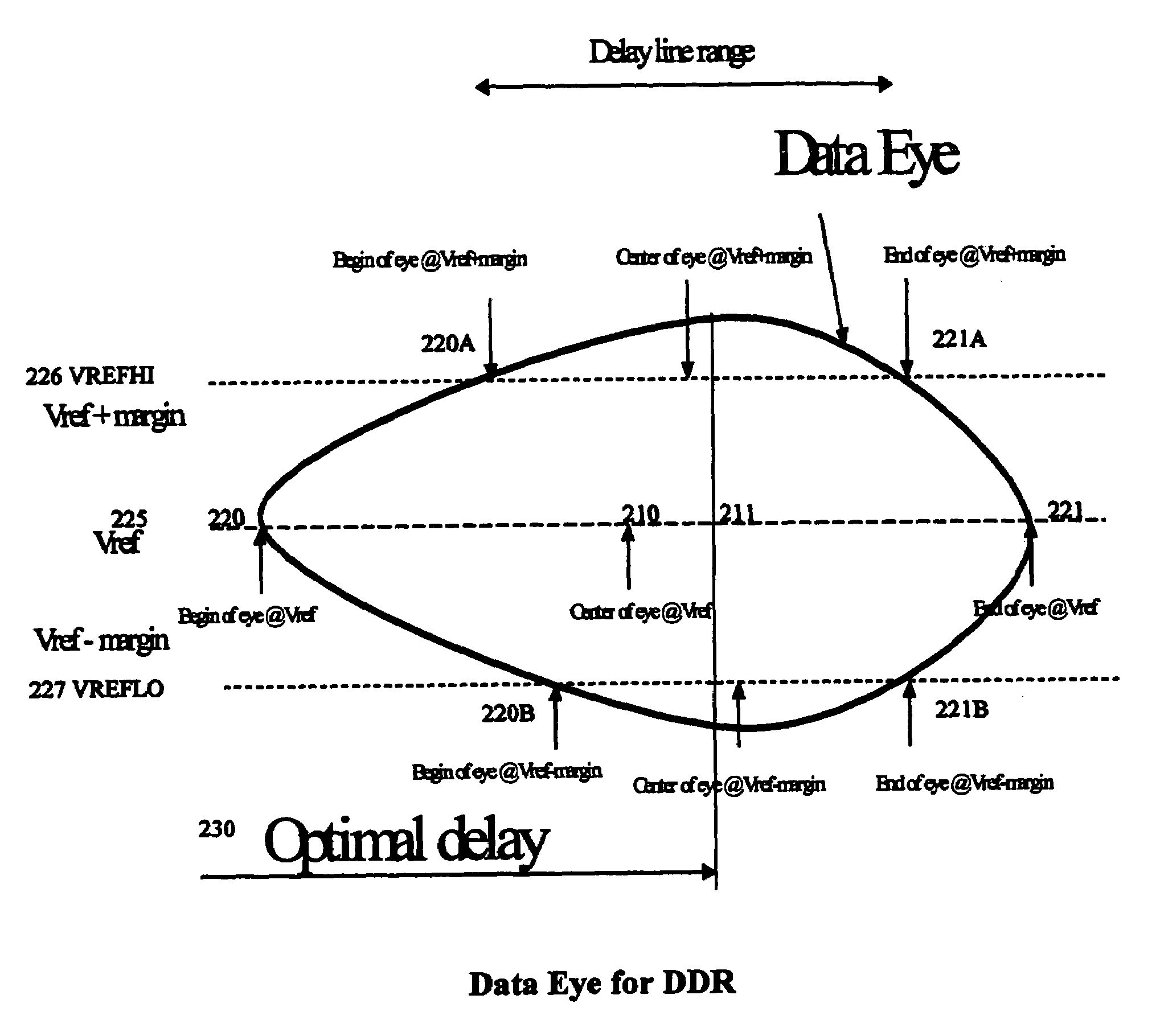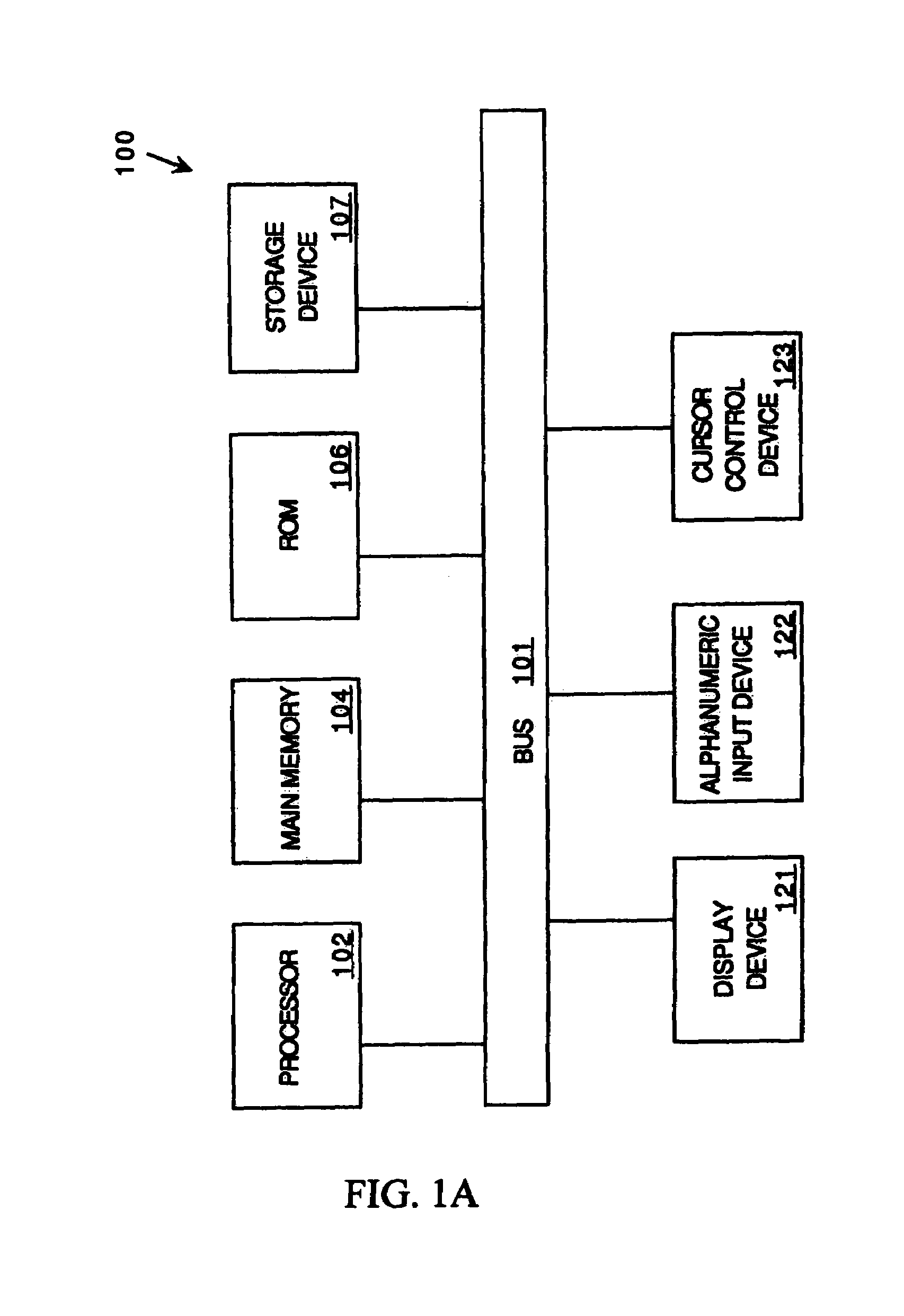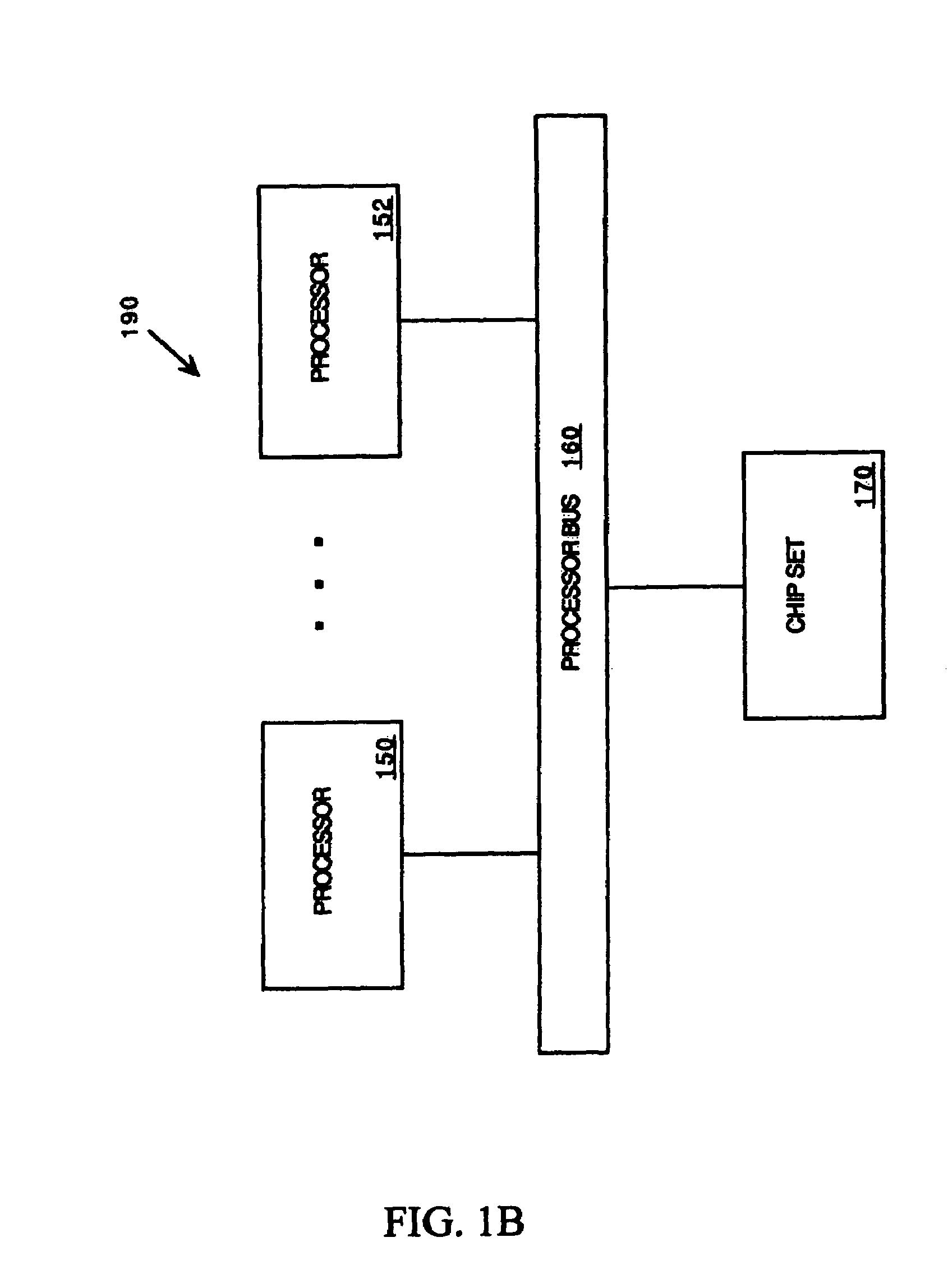Two dimensional data eye centering for source synchronous data transfers
- Summary
- Abstract
- Description
- Claims
- Application Information
AI Technical Summary
Problems solved by technology
Method used
Image
Examples
Embodiment Construction
[0023]Data transfers are referred to as source synchronous when the clock (or strobe) signal that latches the data is supplied by the same chip (a driver) that is driving the data. With source synchronous data transfers, the same process, temperature, and voltage variations affect both the data and clock timings, and a multi-chip system may not need additional timing margin to account for independent variation in these variables along the clock and data paths.
[0024]Strobe signals are clock signals that are transmitted with data signals, either simultaneously or after a predetermined delay. The strobe signal is used to time-synchronize data appearing as input signals at a receiver from a driver (transmitter). The use of the strobe signal to indicate when data should be sampled avoids using a clock which is sent to both driver and receiver. If this latter technique is used, then the skew between the two versions of the clock (transmitter and receiver) must be added to the time that ea...
PUM
 Login to View More
Login to View More Abstract
Description
Claims
Application Information
 Login to View More
Login to View More - R&D
- Intellectual Property
- Life Sciences
- Materials
- Tech Scout
- Unparalleled Data Quality
- Higher Quality Content
- 60% Fewer Hallucinations
Browse by: Latest US Patents, China's latest patents, Technical Efficacy Thesaurus, Application Domain, Technology Topic, Popular Technical Reports.
© 2025 PatSnap. All rights reserved.Legal|Privacy policy|Modern Slavery Act Transparency Statement|Sitemap|About US| Contact US: help@patsnap.com



